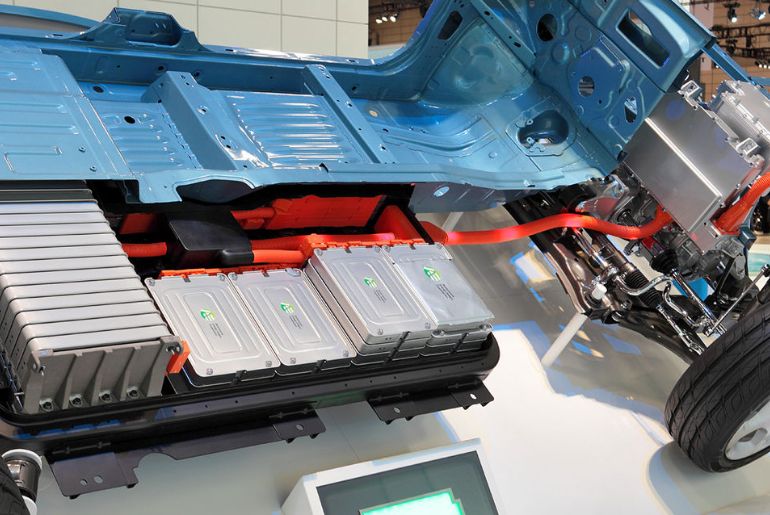As the adoption of electric vehicles (EVs) accelerates globally, the design of traction battery packs has become a critical focus area. These battery packs are at the heart of EV performance, affecting everything from range and efficiency to safety and cost. Among the many design approaches, modular and non-modular traction battery packs stand out as key contenders. Each approach offers unique advantages and trade-offs, making the choice between them a strategic decision for manufacturers. This article delves into the differences between modular and non-modular battery pack designs and their implications for EVs and EV charging infrastructure.
The Role of Traction Battery Packs in EVs
Traction battery packs provide the energy required to propel an electric vehicle. These packs consist of numerous cells organized into configurations that deliver the desired voltage and capacity. Their design impacts an EV’s range, weight, manufacturability, and compatibility with EV charging systems. The global push for longer-range and more affordable EVs has intensified the need for efficient battery pack designs.
Modular Battery Pack Design: Advantages and Trade-offs
Modular battery packs are constructed using pre-designed modules that can be assembled to create a complete battery pack. Each module contains a set of battery cells housed in a standardized casing with its own thermal and electrical management systems.
Advantages:
- Scalability: Modular designs allow manufacturers to use the same modules across multiple EV models, simplifying production and reducing costs.
- Ease of Maintenance: If a module malfunctions, it can be replaced without dismantling the entire pack. This modularity reduces downtime and maintenance costs.
- Flexibility: Modules can be added or removed to create battery packs of varying capacities, enabling manufacturers to customize packs for specific EV requirements.
- Thermal Management: Individual modules often come with built-in cooling systems, improving the overall thermal management of the battery pack.
- Recyclability: Modular packs simplify disassembly for recycling, aligning with sustainability goals in EV production.
Trade-offs:
- Weight and Space: Modular designs can be bulkier and heavier due to additional structural and thermal management components in each module.
- Cost: The added complexity of modules can increase upfront manufacturing costs.
- Energy Density: Non-modular designs typically offer higher energy density, as they optimize space utilization within the battery pack.
Non-Modular Battery Pack Design: Pros and Cons
Non-modular battery packs feature an integrated design, where cells are directly assembled into a single unit. This design emphasizes compactness and efficiency, making it a popular choice for high-performance EVs.
Advantages:
- Higher Energy Density: By eliminating modular casings, non-modular designs maximize the space available for battery cells, leading to higher energy density.
- Reduced Weight: Integrated designs minimize redundant components, reducing the overall weight of the battery pack and improving EV efficiency.
- Lower Cost: Non-modular designs can be more cost-effective to produce at scale due to simplified assembly and fewer components.
- Improved Performance: The streamlined structure of non-modular packs enhances thermal conductivity and electrical efficiency, benefiting high-performance EVs.
Drawbacks:
- Complex Maintenance: Repairing or replacing a faulty cell in a non-modular pack requires dismantling the entire unit, increasing maintenance time and costs.
- Limited Flexibility: Non-modular packs are designed for specific configurations, reducing adaptability for different EV models.
- Recycling Challenges: The integrated nature of non-modular packs complicates disassembly, posing challenges for recycling and sustainability.
Implications for EV Charging and Infrastructure
The design of traction battery packs directly impacts EV charging infrastructure and user experience. Modular and non-modular designs influence factors such as charging speed, thermal performance, and energy management.
-
Fast Charging Compatibility:
- Modular packs, with their advanced thermal management systems, can better handle the heat generated during fast charging, enabling quicker and safer EV charging sessions.
- Non-modular packs, while optimized for performance, may require more robust cooling systems to support high-power EV charging.
-
Grid Integration:
- Modular designs lend themselves to Vehicle-to-Grid (V2G) technology, where EVs can act as mobile energy storage units. The flexibility of modular packs enhances their suitability for bidirectional EV charging systems.
- Non-modular designs, focused on compactness and energy density, may face limitations in supporting grid-interactive features.
-
Charging Behavior:
- The higher energy density of non-modular packs allows for longer driving ranges, reducing the frequency of EV charging. However, their performance during ultra-fast charging sessions needs to be carefully managed.
- Modular packs, while potentially requiring more frequent charging due to slightly lower energy density, provide a more robust and adaptable charging experience.
The Future of Battery Pack Design in EVs
As the demand for electric vehicles grows, the choice between modular and non-modular battery pack designs will depend on various factors, including vehicle type, target market, and intended use. For example:
- Passenger EVs may benefit from modular packs due to their scalability and ease of maintenance, especially as shared mobility and fleet electrification increase.
- High-performance EVs, such as sports cars, may prioritize non-modular designs to achieve maximum energy density and efficiency.
- Commercial EVs and heavy-duty applications may adopt a hybrid approach, leveraging modular designs for easy maintenance and customization while optimizing specific modules for energy density.
Conclusion
The design of traction battery packs—modular or non-modular—is integral to the success of electric vehicles. Each design offers distinct advantages, influencing factors such as energy density, cost, maintenance, and compatibility with EV charging systems. As the EV market evolves, innovations in battery pack design will continue to enhance vehicle performance, user convenience, and sustainability.
Moreover, the interplay between these designs and EV charging infrastructure underscores the importance of holistic solutions in electrifying transportation. By carefully balancing the benefits of modularity and integration, manufacturers can address the diverse needs of EV users while supporting the broader goals of renewable energy adoption and grid stability.
The future of electric vehicles and EV charging lies in thoughtful innovation, ensuring that battery pack designs meet the demands of a rapidly electrifying world. Whether modular, non-modular, or a combination of both, the chosen path will shape the trajectory of sustainable mobility for years to come.


